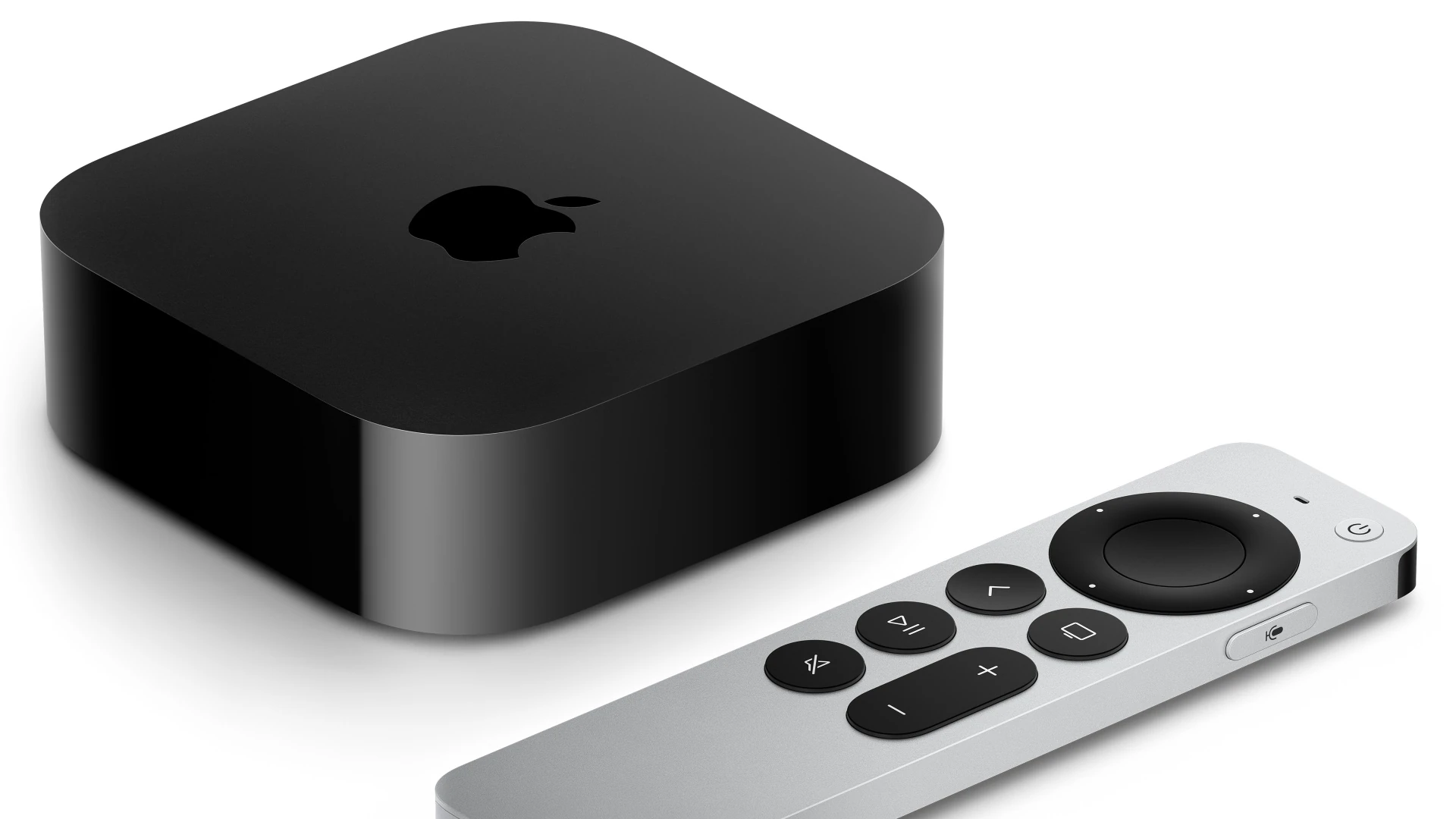Just got your hands on a new Apple TV? Congratulations! This powerful streaming device opens up a world of entertainment, but navigating its settings and features can be a bit overwhelming at first. Fear not! This guide will walk you through the essential settings and tips to get you up and running, ensuring a seamless and enjoyable experience from the get-go. Apple TV brings entertainment to your living room. It connects to your TV and streams shows, movies, and more. Setting it up is easy and quick.
Apple TV offers many settings to make your viewing experience better. You can change the picture quality, adjust sound, and pick your favorite apps. The home screen lets you see all your content in one place. Apple TV keeps getting new features. The latest updates to tvOS make finding your favorite channels and apps easier. It also adds new ways to control your Apple TV with your iPhone.
Unleashing Your Apple TV: Essential Settings and Tips
1. Connect and Set Up:
Start by connecting your Apple TV to your TV using an HDMI cable. Then, plug in the power cord and follow the on-screen instructions to complete the setup process. This usually involves connecting to your Wi-Fi network and signing in with your Apple ID.
2. Customize Your Home Screen:
Make your Apple TV feel like your own by customizing the Home screen. You can rearrange apps, create folders, and even add your favorite channels or shows to the Top Shelf for easy access. To rearrange apps, simply highlight an app, press and hold the touch surface on the Siri Remote, then drag it to its new location.
3. Control Your TV with the Siri Remote:
The Siri Remote can control your TV’s power and volume, eliminating the need for multiple remotes. To enable this feature, go to Settings > Remotes and Devices > Control TVs and Receivers. Make sure the “Control TVs and Receivers” option is turned on. Then, follow the on-screen instructions to set up your TV.
4. Use Siri for Voice Control:
Siri is your voice-activated assistant on Apple TV. You can use it to search for movies, TV shows, apps, and more. Simply press and hold the Siri button on the Siri Remote and speak your request. You can also use Siri to control playback, adjust volume, and get information about what you’re watching.
5. Stream Content from Your iPhone or iPad:
AirPlay lets you wirelessly stream content from your iPhone, iPad, or Mac to your Apple TV. To use AirPlay, make sure your devices are connected to the same Wi-Fi network. Then, open the Control Center on your iPhone or iPad, tap the Screen Mirroring icon, and select your Apple TV.
6. Manage Storage and Apps:
If you’re running low on storage space, you can manage your apps and data in Settings > General > Manage Storage. Here, you can see how much space each app is using and delete any apps you no longer need.
7. Enhance Your Audio Experience:
If you have AirPods or other Bluetooth headphones, you can connect them to your Apple TV for a private listening experience. To do this, go to Settings > Remotes and Devices > Bluetooth. Then, put your headphones in pairing mode and select them from the list of available devices.
Essential Apple TV Settings and Tips
| Setting/Tip | Description |
|---|---|
| Connect and Set Up | Connect your Apple TV to your TV and Wi-Fi network, and sign in with your Apple ID. |
| Customize Your Home Screen | Rearrange apps, create folders, and add your favorite channels or shows to the Top Shelf. |
| Control Your TV with the Siri Remote | Enable the “Control TVs and Receivers” option in Settings to control your TV’s power and volume with the Siri Remote. |
| Use Siri for Voice Control | Press and hold the Siri button on the Siri Remote to search for content, control playback, and more. |
| Stream Content from Your iPhone or iPad | Use AirPlay to wirelessly stream content from your iPhone, iPad, or Mac to your Apple TV. |
| Manage Storage and Apps | Go to Settings > General > Manage Storage to see how much space each app is using and delete any apps you no longer need. |
| Enhance Your Audio Experience | Connect AirPods or other Bluetooth headphones to your Apple TV for a private listening experience. |
Beyond the Basics
Ready to take your Apple TV experience to the next level? Beyond the basic setup, there’s a treasure trove of settings and tips that can enhance your viewing pleasure, streamline your navigation, and personalize your entertainment hub. From optimizing video and audio settings to mastering the Siri Remote’s hidden tricks, let’s dive deeper into the world of Apple TV and unlock its full potential.
Advanced Apple TV Settings and Tips
| Setting/Tip | Description |
|---|---|
| Purchase a good HDMI cable | Get a 48Gbps or “Ultra High Speed Cable” for optimal 4K and HDR content playback |
| Set TV color space to DCI | Choose DCI or Rec. 2020 for HDR content; Rec. 709 for SDR content |
| Double-click back button | Invoke wallpaper or screensaver on the Home screen |
| Use Siri for app navigation and video playback | Ask Siri “what did he say?” to rewind and enable captions, or control playback with voice commands |
| Install Infuse for versatile media playback | Play media from various sources like network shares, cloud storage, and Plex servers |
| Force quit an app | Double-click the TV button, scroll to the app, and swipe up |
| Fast switch between apps | Double-click the TV button and scroll through recent apps |
| Control Apple TV with your iPhone | Use the Control Center on your iPhone to control your Apple TV |
| Use picture-in-picture | Enable picture-in-picture for AirPlay or Apple TV app content |
| Quickly switch audio sources | Press and hold the TV button to select AirPods or other audio devices |
| Create or switch user accounts | Press and hold the TV button, navigate to your profile pic, and tap the + button |
| Locate your Siri Remote with your iPhone | Use the Control Center on your iPhone to find your lost Siri Remote |
| Navigate with the click-pad rim | Touch and move your finger around the rim to select menus or control playback |
| Scrub through video | Use the Siri Remote’s scroll wheel or the click-pad in scroll wheel mode |
| Personalize the Home screen | Arrange apps, create folders, and customize the Top Shelf |
| Adjust Screen Saver settings | Manage download settings and start time for screensavers |
| Set Parental controls | Restrict purchases, in-app purchases, and content ratings |
| Choose keyboard layout | Select Grid or Linear layout based on your preference |
| Manage privacy settings | Disable app tracking and analytics sharing |
| Change DNS settings | Configure DNS to 1.1.1.1 or another provider for enhanced privacy and speed |
| Optimize video and audio settings | Adjust format, HDMI output, chroma, and audio options for the best experience |
| Calibrate video and audio | Use your iPhone for color balance and reduce audio lag with Wireless Audio Sync |
| Adjust Zoom and Overscan | Ensure the full screen is visible and adjust overscan settings on your TV if needed |
| Customize remote settings | Set the TV button to Home Screen and learn your TV remote for unified control |
| Enable Home cinema control | Control your TV’s power with the Apple TV remote using CEC |
| Accessibility: Highlight selected item | Enable a halo around the currently selected menu item for better visibility |
Key Takeaways
- Apple TV is simple to set up and use
- You can customize settings for the best viewing
- New updates add helpful features to Apple TV
Setting Up Your Apple TV
Setting up Apple TV is quick and easy. You’ll connect it to your TV, pair the remote, and set up basic settings.
Initial Setup and Configuration
To start, plug the Apple TV into power and connect it to your TV with an HDMI cable. Turn on your TV and pick the right HDMI input. The Apple TV will turn on and show a setup screen.
Next, pair the Siri Remote. Just take off the plastic wrap and it should pair right away. If not, hold it close to the Apple TV.
You’ll need to set up Wi-Fi or plug in an Ethernet cable. Pick your network and type in the password. You can also use your iPhone to share Wi-Fi info.
Sign in with your Apple ID. This lets you use iCloud and buy stuff from the App Store. You can skip this step if you want.
Configuring Video and Audio
After basic setup, you can tweak video and audio settings. Go to Settings > Video and Audio.
For the best picture, set your TV type and pick 4K HDR if your TV supports it. You can turn on match content to adjust for each show or movie.
Audio settings let you pick surround sound formats like Dolby Atmos. Make sure your sound system can handle it first.
You can also change other settings like subtitles and audio descriptions. Play around with the options to find what works best for you.
Optimizing the User Experience
Apple TV offers many ways to make it work better for you. You can change settings and use special features to get the most out of your device.
Personalizing Settings and Content
Change the language to your preferred one in the Settings menu. Adjust video settings like dynamic range and frame rate for the best picture. Set up the sound level and effects to match your room.
Create folders to organize your apps. Put your favorite apps on the top shelf for quick access. Use the App Store to find new apps you might like.
Set up profiles for each family member. This lets everyone have their own watchlists and recommendations. Use the “Up Next” queue to keep track of shows you want to watch.
Advanced Features and Accessibility
Turn on AirPlay to stream content from your iPhone or iPad to the TV. Connect Bluetooth headphones for private listening. Use HomeKit to control smart home devices with your Apple TV.
Set up a custom screensaver with your own photos. Enable subtitles or closed captions if you need them. Turn on the “Reduce Loud Sounds” feature to even out volume levels.
Use Siri voice control to search for content or control playback. Say “What should I watch?” for personalized recommendations. Open Control Center to quickly adjust settings or switch audio outputs.
Pair Your Apple TV Remote

To connect your Apple TV remote for the first time or to re-establish a connection, follow these simple steps:
- Position your remote: Hold your Apple TV remote close to your Apple TV device, ideally within 3 inches.
- Press and hold: Press and hold both the Back button (left-pointing arrow) and the Volume Up button simultaneously for at least 5 seconds.
- Wait for the pairing prompt: A message will appear on your TV screen indicating that the remote is attempting to pair. Continue holding the buttons until the pairing process is complete.
- Confirmation: Once paired, you’ll see a confirmation message on your TV screen. You can now use your remote to control your Apple TV.
Note: If you’re having trouble pairing your remote, make sure it’s charged and try the steps again. If the issue persists, you may need to reset your remote or contact Apple Support for further assistance.
Setting Up A VPN on Apple TV
Although Apple TV doesn’t have built-in VPN support, you can still enjoy the benefits of a VPN using a few different methods:
- VPN App: Some VPN providers offer dedicated apps for Apple TV. Simply download the app from the App Store, log in, and connect to your desired server.
- Router Configuration: Install a VPN on your Wi-Fi router to protect all devices connected to your network, including your Apple TV. This provides comprehensive coverage but may require some technical know-how.
- Share a VPN Connection: If your computer or mobile device is connected to a VPN, you can share that connection with your Apple TV using a wired or wireless hotspot.
- Smart DNS: Some VPNs offer Smart DNS, which allows you to access geo-restricted content without encrypting your entire connection. Configure your Apple TV’s DNS settings to use your VPN provider’s Smart DNS servers.
Remember to choose a reliable VPN provider that offers compatibility with Apple TV and provides fast speeds for streaming.
FAQs
Apple TV not working/Apple TV won’t load
If your Apple TV is experiencing issues, here are some troubleshooting steps you can try: * **Check your HDMI connection:** Ensure the HDMI cable is securely plugged into both your Apple TV and your TV. Try a different HDMI cable or port if possible. * **Restart your Apple TV:** Unplug the power cord, wait a few seconds, then plug it back in. * **Check your network connection:** Make sure your Apple TV is connected to the internet. Restart your router if needed. * **Update your Apple TV software:** Go to Settings > System > Software Updates and check for any available updates. * **Reset your Apple TV:** If the above steps don’t work, you can try resetting your Apple TV to its factory settings. Go to Settings > System > Reset. If you continue to experience problems, contact Apple Support for further assistance.
Apple TV App not working
If the Apple TV app itself is not working, try the following: * **Force close the app:** Double-press the Home button on your Apple TV remote, swipe up on the Apple TV app to close it, then relaunch it. * **Sign out and back in:** Go to Settings > Users and Accounts > [Your Name] > Sign Out. Then sign back in with your Apple ID. * **Update the app:** Check the App Store for any available updates for the Apple TV app. * **Restart your Apple TV:** Unplug the power cord, wait a few seconds, then plug it back in. If the problem persists, reach out to Apple Support.
Does Apple TV have ESPN?
Yes, ESPN is available on Apple TV through the ESPN app. You’ll need a subscription to ESPN+ or a participating cable or satellite TV provider to access live ESPN content.
Does Apple TV have local channels
Apple TV does not offer built-in access to local channels. However, you can access local channels through various apps, such as: * **Antenna and tuner:** Connect an antenna and tuner to your TV, then use the Apple TV’s built-in TV app to access local channels. * **Live TV streaming services:** Subscribe to a live TV streaming service like Hulu + Live TV, YouTube TV, or Sling TV, which often include local channels in their packages. * **Individual channel apps:** Some local channels offer their own standalone apps on the Apple TV App Store.
Apple TV Picture-in-Picture
Yes, Apple TV supports Picture in Picture (PiP). This allows you to watch a video in a small window while using other apps or navigating the Apple TV interface. To activate PiP, start playing a video, then press the Home button on your remote twice. The video will shrink into a PiP window, which you can move around or resize.
Does Apple TV Have An Annual Subscription?
Apple TV itself does not require an annual subscription. However, you’ll need subscriptions to various streaming services to access their content on Apple TV. Apple also offers its own Apple TV+ subscription service, which provides access to original Apple TV shows and movies. This subscription is billed monthly, but you can choose to pay annually for a discounted rate.







